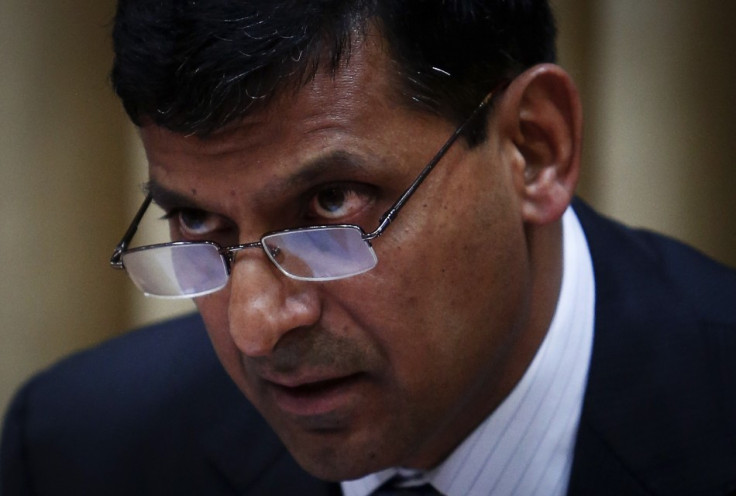India's Central Bank Raises Benchmark Rate as Raghuram Rajan Shifts Focus to Inflation

India's central bank has shocked the markets by raising its benchmark interest rates in order to contain rising inflation in the country despite a slowdown in the economy.
In its mid-quarter monetary policy review, the Reserve Bank of India (RBI) hiked the repo rate - the interest rate at which the central bank lends to other banks - by 25 basis points to 7.50%.
In order to balance the rate hike, the bank reduced the so-called marginal standing facility (MSF) rate by 75 basis points to 9.5%. Under the marginal standing facility, banks can borrow overnight from the central bank against approved government securities.
Furthermore, the central bank cut the minimum proportion of the cash reserve ratio that banks must maintain at the RBI from 99% to 95%.
Inflation
The decision comes as India's wholesale price inflation rose again on the rupee slump and higher vegetable prices.
Wholesale price inflation rose to a six-month high in August at 6.1% from 5.8% in July, according to the Commerce Ministry.
Higher inflation was partly due to a rise in oil prices in line with a fall in the value of the rupee. In addition, India has suffered from heavy rainfall so far in 2013, resulting in high food prices, especially of vegetables.
"Recognising that inflationary pressures are mounting and determined to establish a nominal anchor which will allow us to preserve the internal value of the rupee, we have raised the repo rate by 25 basis points," RBI governor Raghuram Rajan said in a statement.
"These measures will reduce the cost of bank financing substantially while allowing us to take an appropriately precautionary stance on inflation."
Surprise Move and Focus on Inflation
The rate hike was a surprise move from Rajan, who has taken over as the head of the central bank earlier in September. Most of the economists expected him to keep rates unchanged despite the rate of inflation in his first policy review meeting.
"The upshot is that Mr Rajan is presenting himself as a more hawkish governor than his predecessor," said Daniel Martin, economist at Capital Economics.
"Governor Rajan is clearly asking the market to focus on inflation above other potential policy targets," said Roland Randall at ANZ Research.
His predecessor D. Subbarao had sidelined inflation and growth concerns to focus on "external sector concerns", including the rupee stability and balance of payments.
"We think that RBI will adopt an inflation target, but not quite yet. This is likely to happen formally sometime in 2014," Randall added.
"Focusing on a single objective - low and stable inflation - is ultimately the best way that monetary policy can promote macroeconomic and financial stability," Rajan wrote in a 2008 IMF paper.
Growth Concerns
Following the announcement, the rupee fell 0.16% against the US dollar. It is trading at 62.34 as at 11:18 am GMT. The currency plunged to an all-time low of 68.80 against the US dollar in August.
That was in addition to a widening current account deficit and a slowdown in the country's economic growth. India also suffered from the retreat of foreign investors due to fears of the US stimulus tapering.
However, the US Federal Reserve on 18 September surprised global markets by keeping its bond-buyback programme at the same pace.
"Let us remember that the postponement of tapering is only that, a postponement. We must use this time to create a bullet proof national balance sheet and growth agenda, which creates confidence in citizens and investors alike," Rajan said speaking about the US postponement of tapering.
Positive for Rupee?
Martin said that a hike in repo rates and a cut in MSF rates will offset each other, so "the impact on short-term market interest rates is ambiguous".
"The tightening impact of the rate move has been offset by the decision to roll back the liquidity tightening measures," he wrote.
He added that growth will largely depend on how local interest rates respond to the decision.
Meanwhile, Irene Cheung at ANZ Research said that the "more consistent, transparent policy" will longer-term positive for the rupee.
"We think that the rate changes as a whole are not an outright tightening as it may appear to be. Although the bond market/INR may sell off initially, a likely fall in the overnight call rate, on the back of the MSF rate cut, is positive for liquidity," Cheung said.
© Copyright IBTimes 2025. All rights reserved.






















